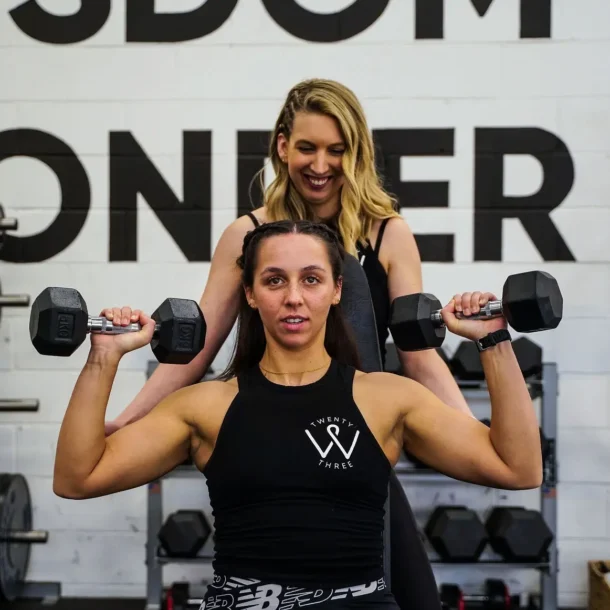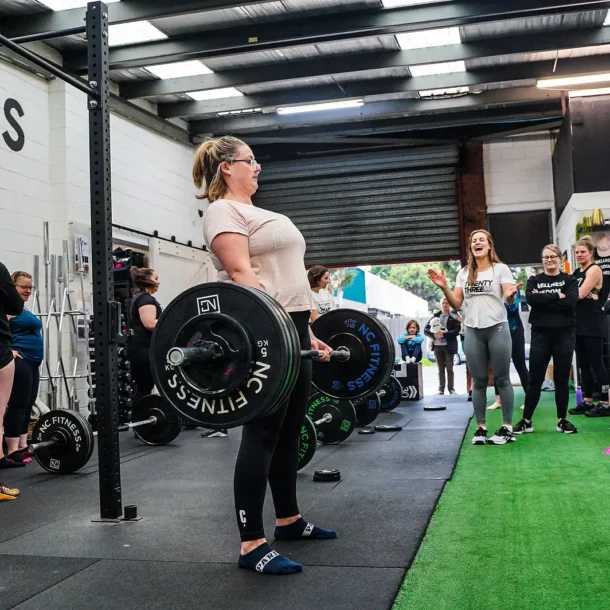

If you are reading this, you have probably had a baby! Congratulations!
Or maybe you are just interested in the road to rehab post pregnancy as it is not something that is spoken about often. Over the last few months some of my amazing friends have recently entered into motherhood and now have the most important job in the world to care for their precious bundles.
Training women during this pre to post-natal journey is such an amazing gift as a PT, as you are able to share in the excitement of the growing baby and preparations for a life once the baby enters the world.
There are so many emotions that come to mind when women think about pregnancy and for some getting back to their pre-baby body is the first thing desired. And while this idea is commendable, there are a few things women should know before getting back to an exercise regime. It takes 9 months to grow a baby, give yourself this time and longer to rehabilitate.
Let’s be clear, from 0-6 weeks, the gym is NOT the place for a new mum. The all important 6 week check up is there for good reason, but this is not to say you can not be taking daily actions to get the rehabilitation process underway. Here is our step by step guide of what to do following the birth of your little one, amidst the cuddles, naps and new routines.
Other than goals around keeping a happy and healthy baby, the main goal 6 weeks post birth is to regain function.
This would include:
The first thing you should do is enjoy your time as a new mum and allow yourself to heal properly. The method of RICER also applies to childbirth too (Rest, Ice, Compression, Elevation and Refer. All new mums are encouraged to rest as much as possible, allow the people around you to help and ensure you get downtime (when you can). Trying to do too much too soon can be really detrimental to your recovery, it can further weaken your pelvis floor (leading to incontinence), prevent the full closer of the rectus abdominals (leading to a permanent baby bump) and poor physical and emotional health status.
But for those with itchy feet or wanting to know ‘the next step’, the following information should help guide your path to full recovery.
Chat to you doctor post-delivery to ensure that you get a full debrief of your labour and ensure your healing progress in monitored. Know how any complications may impact your recovery time and physical capabilities moving forward. Your nurse should check out your rectus abdominals for any separation. Rectus Diastasis is the separation of 2 cm or greater of you abdominals. It is relatively common in most pregnancy (around 60% of all pregnancies).
Even if you have not had a C section, the heaviest thing you should be lifting is your baby. To protect you pelvic floor and stretched abdominal muscles, you should avoid an activities that force you to bear down. You are also at risk of doing damage through chronic coughing or through constipation. Be sure to seek medical help if required.
Your goal in the first few weeks after birth should be physical recovery, strengthening you pelvic floor and increasing your mobility. Once you feel ready to do so, you should start by practising pelvic floor exercises first
Start with good relaxation and take 5 deep breaths directed towards your lower tummy and in your pelvis to help fully release your pelvic floor. Then focus on the activate your pelvic floor by drawing the walls of the vagina together, then lifting from the anal sphincter. Keep the abdominals involvement to a minimum. Hold for 5- 10 seconds. Then relax and take x 5 breaths again to help fully release before your next rep. Repeat this another 3-4 times throughout the day.
Remember that the release of pelvic floor is just important as the contraction, be sure to spend equal amount of time relaxing it fully. When possible stretch your neck and back to encourage mobility.
Following Kegel exercises begin to practice lower abdominal exercises by siting on the edge of a chair. Squeeze the pelvic floor and gentle lift your leg off the ground, holding and returning to the ground. Continue to introduce abdominal work that focuses on your transverse abdominal only, exercises like pallof press or pallof press hold, leg lifts, bent knee fallouts, bird dogs and dead bugs are all great exercises to start with.
6 weeks post-partum
Start with activities that you found comfortable towards the end of your pregnancy. As you heal and the Relaxin hormone that loosens your joints during pregnancy dissipates and you will find your prenatal exercises less challenging. Be aware that while still breastfeeding, your joints, particular pelvis, may become prone to inflammation and activities like long walks can lead to pelvis pain. At this point you may be able to start to introduce abdominal work that focuses on your obliques and then several weeks later, your rectus abdominals. At this stage, you should avoid high intensity or impact exercises and avoid exercises where the leg position is wide, like lunges or sumo position. Lower range of movement, keep the load light and keep the base of support narrow. Remember that you will not always need to modify your gym program, but being mindful to rebuild your base level of strength properly will ensure a safe, injury free return in the long run.
Last piece of advice
At all times remember to listen to your body, slowly increasing the time and intensity of your workouts, and be sure to focus on quality of your movement before increasing weight.
Thank you to my beautiful client and friend Lauren (and Charlotte) for allowing me to share their journey and use this image.

Ange Drake is an personal trainer, women’s empowerment coach and fitness blogger in the northern suburbs of Melbourne. She is the director of one of the few womens’ only strength training gyms in Melbourne, 23W. Ange helps women to learn how to use strength based training, nutritional strategies and a positive mindset to transform their bodies, relationship with food and mind.
Can’t decide which of our packages is best suited for you? Take our questionnaire to help you decide!





